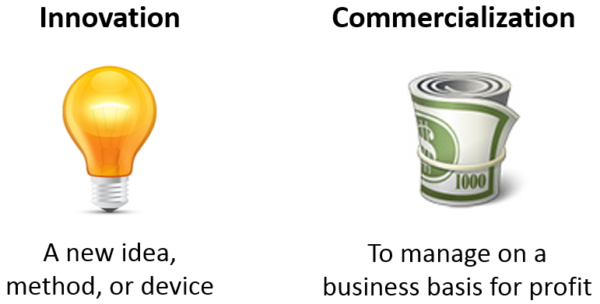
April 8, 2021
The Fundamental Challenge of Turning an Idea into a Business
5 minute read
Last week we were talking with an executive about an idea for a new line of business within his company. He commented that while it wasn’t easy to come up with this idea for a new business, figuring out how to turn it into a business has been a major challenge. “What makes this so hard?” he lamented.
Our response was something like this, “You have all these different pieces of a business that are interconnected and need to work together – with varying levels of uncertainty around each piece. It’s like putting together a three dimensional puzzle when you don’t know exactly what the puzzle pieces look like.” Said another way, the fundamental challenge of turning an idea into a successful business is figuring out how to best put together the interconnected pieces given the uncertainty around each piece.
A 3-D Puzzle with Evolving Puzzle Pieces
Let’s better understand this by looking at the challenge of putting together the interconnected pieces – or building blocks – of a business. The target group we choose impacts the concept we write, and the product we build, and the price we set, and the channels through which we sell, etc. Each of the different combinations of interconnected building blocks (i.e. target, concept, product, price, channels, etc.) will result in building a different kind of business. And, each different kind of business will require different capabilities, different investment levels, and bring with it a different level of risk and expected return. With all of the different plausible combinations, figuring out the right combination can be a daunting task.
Now, let’s add to the “interconnected building blocks” challenge the reality that there are varying levels of uncertainty around each of the building blocks. We think we can translate our novel technology into product superiority on benefit A, which would enable us to target the category heavy users with a superiority claim and a premium price. However, if we’re unable to develop a product to deliver product superiority on benefit A, then we’d need to target a different group of consumers with benefit B, with a different concept and price. And, by the way, this different group of consumers primarily shops a different sales channel. Net, our different plausible combinations from above, just got exponentially more difficult given the uncertainty around each of the building blocks.
3 Methods: 2 Most Common, 1 Most Effective
So, with all the different plausible combinations of in flux building blocks, how do you go about figuring out the best way to put together a successful business? Here are three methods – the first two are most common, with the third method being most effective in our experience:
Method #1: Pick an approach, optimize each building block accordingly, and launch.
- Pros: You’ve made a clear choice on how to build the business so you can optimize the building blocks accordingly.
- Cons: You’ve made a choice based on conceptual merits, not business potential. Net, the chosen approach may not be viable (i.e. you’re unable to make enough money to payout the investment) or optimal (i.e. another approach would have made more money).
Method #2: Pick an approach, launch, learn and pivot.
- Pros: You’ve made a clear choice on how to build the business and you’ll be getting real-time feedback on how that approach is working as a business.
- Cons: Pivoting in-market consumes valuable time and money – even for small, nimble companies. And, it becomes increasingly more difficult for larger companies. Of note, the cost to “pivot” in-market is often 10x higher (time and money) than pre-market, IF your company is nimble enough to pull this off. Often times, especially with big companies, a pivot is time and cost prohibitive and what could have been a successful new launch dies because one or two of the building blocks wasn’t right.
Method #3: Prototype multiple approaches to “pivot” to the best approach “pre-launch.”
- Pros: You’ve explored multiple approaches conceptual (using business blueprints) and built an activity-based prototype of how the most promising approaches would work in practice (i.e. strategically, operationally, and financially). Net, you’re able to “pivot” to the best approach “pre-market” based on business potential, which is faster and cheaper than pivoting in-market.
- Cons: Prototyping multiple approaches adds additional work in the early stages of turning an idea into a business.
Any of these methods are a legitimate way to turn an idea into a successful business, with each method having different trade offs. We advocate Method #3 because we’ve seen it to be most effective in our 20+ years of turning ideas into businesses. If you’re an established business and you’re launching something “close in” (e.g. a flavor change to a current product) then Method #1 is probably best because there is considerably less uncertainty around each building block and how to put them together. If you’re a boot-strapping start-up, Method #2 may be the only option – though we would strongly advocate focusing the learning on what matters most to scaling up the business – since every iteration of learning takes time and money.
And, finally, it is important to note that whichever method is chosen there will always be learning and adapting once in-market. The key is launching as close as possible to “the best approach” so time and money can be spent fueling growth rather than making fundamental changes to the business.
Key Points:
- When turning an idea into a successful business the fundamental challenge is figuring out how to put together the interconnected and often “in flux” building blocks of a business.
- There are three different methods to solving this problem – each with different trade offs.
- We advocate prototyping multiple approaches to “pivot pre-market” (Method #3) as we’ve found it to be the most effective way to get as close as possible to “best” for launch.



